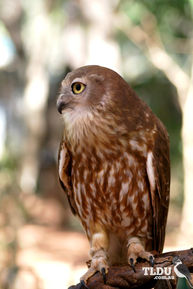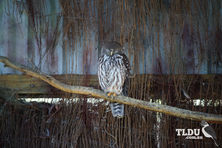
Shoppers Feedback:
Jan 17, 2017
Hello Ros,
I have now paid the invoice, but I would like to write to you just to say a big THANK YOU for getting me the Penguin!
The ChatterMate Penguin became a nice memory for me when I was in New Zealand, and I am so greatful to you for arranging so that I could have it! :-)
Thank you so much!!!!!!!!!!!
Regards,
Malin
Hi Ros,
Many thanks for your very kind email. I really appreciate your prompt reply!
I appreciate your advice regarding the decorations and customs. These are a gift for my daughter’s exchange student family so when she returns home on the weekend I will show her and see if she loves them as much as I do!
Thanks so very much again - I am truly grateful for your kind assistance.
Kind Regards
Bernadette
Ros,
Thanks again for the great customer service. It's a refreshing change!
Best regards,
Trevor
Hey Roz,
Thank you for your emails. Just loved my first order. The cute little Aussie bush critters are going to be used for an office Christmas decoration. My colleagues also liked them and talked about making an order to your site. I'll send you a photo when completed.
I'll be ordering more to send to my daughter's host family in America.
Fabulous service from you.
Kind regards,
Michelle
Thankyou. Order arrived today. One very happy grandson with his new beastly binoculars.
Regards,
Irene
- Home
- Wild Wonders
- Shop
- Aromas of Australia
- Australian Made
- Books
- Book Marks
- Christmas Decoration Sale
- Christmas Decorations
- Clocks
- Drink Holders
- Garden & Outdoor
- Gift Wrapping & Cards
- Home & Giftware
- Jewellery
- Keyrings
- New Products
- Pencils & Pen Holders
- Photo Frames
- Plush Toys
- Plush with Sound
- Sheepskin Rugs
- Stationery
- Stone Carvings
- Toys & Games
- Travel Goods
- Wedding
- Wild Figurines
- Wildlife Safety Products
- Wind Chimes
- Wine Charms
- View All Products
- Wildlife
- Australiana
- Explore
- Contact Us

Quick Facts
| Length: | 40 cm |
| Height: | - |
| Weight: | - |
| Colour: | - |
| Habitat: | Open woodlands, edges of forests adjacent to farmland |
| Food: | - |
| Predators: | Feral Honey Bees in NSW. Foxes and cats, agricultual poisoning, barbed wire fences |
| Status: | - |
The Barking Owl is a medium-sized hawk-owl. Hawk-owls lack the definite heart-shaped face of the tyto-owls (which include the Barn Owl). There are two subspecies of Barking Owl. Ninox connivens connivens occurs in eastern, south-eastern and south-western Australia and N. connivens peninusularis is found in northern Western Australia, the far north of Queesland and the Northern Territory.
Adult Barking Owls are grey-brown above, with white spots on the wings, and whitish below, heavily streaked with grey-brown. The head is almost entirely grey-brown, and the eyes are large and yellow. Young Barking Owls have less streaking on the underparts and are mottled white and grey-brown on the rear of the neck. Barking Owls are nocturnal birds (night birds), although they may sometimes be seen hunting during the day.
The similarly plumaged Southern Boobook, is more brown or rufous-brown, and has more spots (rather than streaks) on the underparts. The Southern Boobook is also smaller, measuring 28 to 36 cm.
Barking Owls are widely distributed throughout Australia, but are absent from central areas.
Barking Owls are found in open woodlands and the edges of forests, often adjacent to farmland. They are less likely to use the interior of forested habitat.
They are usually found in habitats that are dominated by eucalytpus species, particularly red gum, and, in the tropics, paperbark species. They prefer woodlands and forests with a high density of large trees and particularly sites with hollows that are used by the owls as well as their prey. Roost sites are often located near waterways or wetlands.
The Barking Owl feeds on a variety of small to medium-sized mammals, birds, reptiles and insects. Diet is largely insects during the non-breeding season, with larger prey more commonly taken when breeding. Prey is located either from the air or from an exposed perch. Most hunting is performed in the first few hours of the night and the last hours before dawn. Occasionally, birds may even be seen hunting in daylight. The Barking Owl prefers to hunt in clearings, including waterways and other open areas.
Barking Owls raise a single brood in a season. The nest site is an open hollow in a tree trunk, loosely lined with sticks and other wood debris. The female incubates the eggs, while the male supplies the food. Young Barking Owls remain dependent on their parents for several months, and will remain in the family group until a few months before the next breeding season.
Barking Owls have declined rapidly throughout much of their range. In Victoria it is estimated that there are only 50 pairs left.
Habitat loss and degradation is a major threat to the survival of the Barking Owl. Loss of hollow-bearing trees and firewood harvesting impacts on the species by removing nesting and roost sites as well as habitat for hollow-dependent prey such as gliders, possums and parrots.
Competition from feral honeybees for roost sites has been named a key threatening process for this species in NSW. Competition with foxes and feral cats, as well as predation by foxes is also thought to be a reason for their decline.
Barking Owl mortality has also been recorded due to secondary agricultural poisoning, barbed wire fences and vehicle collisions.
Last Updated: Thursday 18th July, 2013
BirdLife Australia - www.birdlife.org.au
BUSH e-TELEGRAPH
Signup for our monthly newsletter the "e-Telegraph"
Quick Links
Home | The Beginning | About The Land Down Under | Wild Wonders | Advertise on Wild Wonders | Christmas Decoration Sale | Christmas Tree Decorations | Drink Holders | Plush with Sound | Stone Carvings | Wildlife Wine Charms | Freebies | Australian Wildlife | Help Our Wildlife | Australiana | Photo of the Month | Explore The Land Down Under | Contact Us | Legal Notices


